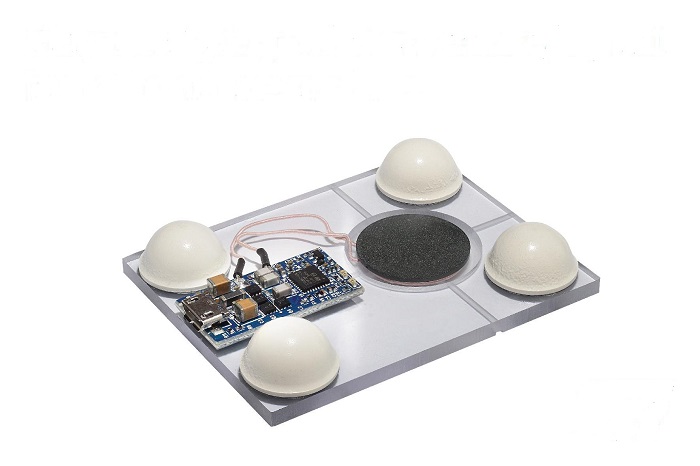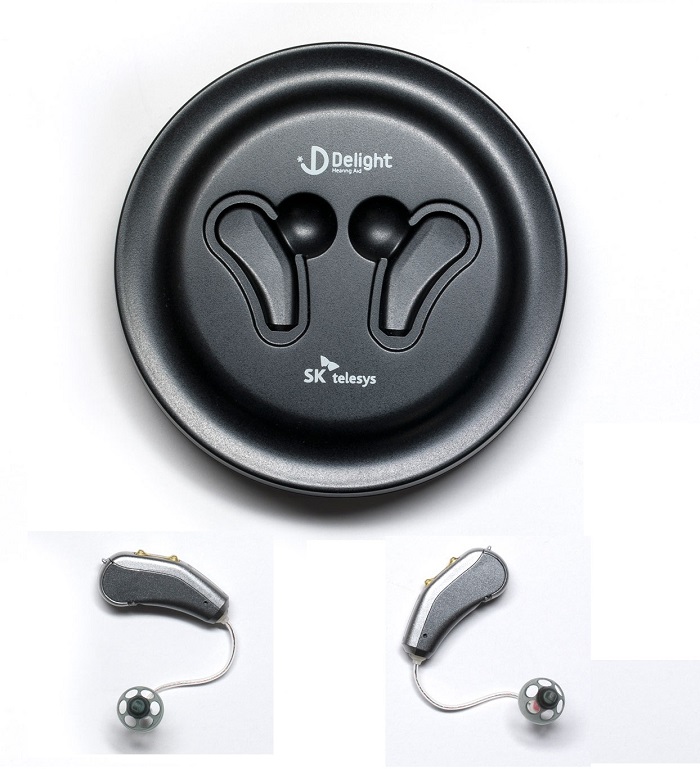By Majeed Ahmad, contributing writer
The notion of untethered wireless charging has long been considered a key smartphone differentiator for making cables and power banks obsolete. It’s finally happening, as wireless transmitters can now be found in furniture, airport terminals, and restaurants.
According to Yole Développement, technology developers have efficiently handled the technical complexity of putting a smartphone into a strong electromagnetic field. The market research firm projects that wireless charging in mobile phones will s urpass 1.2 billion receivers by2024.
A wireless charging system comprises two parts: the transmitter that acts as the actual charging station and the receiver integrated into the device it’s going to charge. Silicon vendors are offering single-chip solutions for both transmitter and receiver parts of the wireless charging design value chain.

A view of a plug-and-play wireless charging design kit. (Image: STMicroelectronics)
For a start, chipmakers are providing solutions around both inductive charging and resonant charging, which use different physical mechanisms but share similar technological content. That, as Yole points out, includes inverters, rectifiers, drivers, buck converters, and coils. Next, chipmakers aresimplifying the implementation of wireless power transmitter systems while steadily reducing the number of discrete components.
In wireless charging designs, much of the limelight has been captured byforeign object detection (FOD) systems and related issues as such accuracy, safety, and power draw. Here, the transmitter chip linked to the receiver chip via bidirectional communications must ensure the safe detection of the charging device.
The role of FOD is critical in providing detection accuracy and thus ensures the security of the charging operation. It also plays a vital role in preventing metal objects from overheating when placed between the transmitter and mobile device like the smartphone.
In the wireless charging standards realm, the Wireless Power Consortium (WPC), which manages the Qi specification, has introduced the Extended Power profile for faster charging by raising the maximum charging power from 5 W to 15 W.
This new profile dramatically shortens charging time by enabling devices to be charged up to three times more quickly. It’s worth mentioning here that wireless charging systems support most of the proprietary wireless fast-charge extensions of leading smartphone manufacturers.
Smartphone designs, craving for technology differentiators, are starting to offer Qi-based wireless charging pads. The following section will provide design examples of how new smartphone models are reinvigorating this otherwise slow-moving technology initiative.
Wireless charging smartphones
In a wireless charger transmitter, a DC/DC converter and a controller generate the input power and the control signals for an external half-bridge power stage that drives the charging transmitter antenna. Case in point: STMicroelectronics’ 15-W wireless battery-charger chip STWBC-MC that supports the Qi 1.2.4 specification.
The transmitter chip controls multiple charging coils, making charging less dependent on the precise position of the battery-powered device. At the same time, however, STWBC-MC facilitates extended FOD through bidirectional communication with the receiver to detect a valid receiver and select the most efficient coil for power transfer.
Next, the STWBC-MC chip utilizes the digital DC/DC controller to deliver the required power to the coil at a fixed frequency, which also minimizes interference with other systems inside smartphone and tablet designs. Additionally, the transmitter chip monitors coil current and voltage to ensure fast and stable charging for all types of devices.
The transmitter chip comes with the STEVAL-ISB047V1 evaluation kit and the STSW-STWBCGUI graphical user interface (GUI) that can quickly download the STSW-ISB047FW dedicated firmware.

Samsung has launched wireless chargers capable of supporting multiple devices. (Image: IDT)
Samsung has recently unveiled the Duo wireless charger pad that can simultaneously charge the Galaxy S9, Galaxy Note 9, and other Samsung smartphones as well as the Galaxy smartwatch. The 7.5-W wireless charger utilizes IDT’s wireless power transmitter based on the WPC Qi specifications. IDT’s wireless power receiver complements the transmitter chip, and both wireless charging ICs are based on a 32-bit Arm Cortex-M0 processor.
Samsung later extended the wireless charging ecosystem for its Galaxy S10, S10 Plus, S10e, and Fold smartphones, again using IDT’s Qi-based transmitter and receiver chips.
It’s worth noting that these pads can also be used for automotive in-cabin charging systems. For in-vehicle use, however, they are required to meet strict automotive safety, security, environmental, and regulatory requirements.
Beyond smartphones
As the example of Samsung’s Duo shows, wireless chargers can serve any Qi-certified device in their baseline power mode. That includes hearing aids, activity trackers, smart headphones, smart jewelry and clothing, low-power industrial and medical devices, and LED fixtures.
In fact, equipping wearable devices with wireless charging could redefine this promising but unique market all over again. The wearable devices require frequent charging, and innovative new techniques like RF wireless charging ideally fit into this power conundrum.
Take, for instance, the WattUp technology from Energous that provides over-the-air power for charging of electronic devices instead of relying on inductive and resonant charging methods. It delivers energy safely through the air using radio frequencies at distances of up to 15 feet and accommodates multiple devices placed in any orientation.

The availability of over-the-air power and charging can revolutionize wearable designs. (Image: Energous)
In 2016, the San Jose, California-based Energous joined hands with Dialog Semiconductor, and the outcome of this collaboration was the DA4100 wireless power transmitter system-on-chip (SoC) that integrates a Cortex M0+ processor core, RF transmitter, and power management functionality into a single chip measuring 7 × 7 mm.
The transmitter chip is complemented by Dialog’s RF-to-DC wireless power receiver chips that allow connections to up to four antennas depending on the desired power and antenna area available. The DA2210 and DA2223 receiver chips feature external RF input matching for improved flexibility and RF-to-DC conversion efficiency.
Energous is targeting the WattUp wireless charging system at small-form-factor applications such as wearables, hearables, hearing aids, asset trackers, and other battery-powered devices. Then there are gaming as well as augmented reality (AR) and virtual reality (VR) gizmos that can immensely benefit from the untethered wireless power supply.
More integration, optimization
Wireless charging, which emerged on the technology scene during the early 2010s, began its journey as a key differentiator in the post-iPhone boon. Automotive OEMs and Tier-One suppliers were next to see its potential as a valuable add-on. And now, designers are eyeing new RF-centric mechanisms for wireless-charging–equipped wearables, portable electronics, and other low-power applications.
The designers are steadily overcoming the wireless charging system complexities to offer a drop-and-charge experience for users. And the ultimate goal of wireless chargers is to be as fast as wired chargers while they handle thermal management challenges to eliminate noise and vibrations.
In the final analysis, the market for wireless charging is still highly uneven and consumer-oriented. So designers need to further accelerate the integration and optimization of wireless charging technology components to drive greater adoption.
Advertisement
Learn more about Electronic Products Magazine





